PENRHYNDEUDRAETH is the perfect place for writer Des Marshall to call home.
Nestled within the Snowdonia National Park Authority, it is the ideal base for the former climbing and caving instructor turned walking guide writer turned historian.
Since 2019, six books specifically about Snowdonia have been written by Des and published by Gwasg Carreg Gwalch. They are Snowdonia Slate (2019), The Mountain Lakes of Snowdonia, Snowdonia’s Waterfalls, Day Walks From the Slate Trail of Snowdonia (all 2020), Snowdonia Metal Mines and Snowdonia Slate 2 (both 2022).
Prior to 2019, Des and Gwasg Carreg Gwalch have published another six books on Snowdonia and the Llŷn.
As I catch up with Des on the phone, he has turned his attention further north.
“I’m walking along a section of the Anglesey Coast Path,” he explains.
“It’s a beach section from Newborough to Maltraeth.”
Des explains that this time, this walk is for fun, not with a view to writing a book.
His desire to walk the coastal path, and his interest in the great outdoors, stems back to his childhood, as he explained.
“I read my first map when I was seven,” he said.
“I’m a young 78 now; I have the brain of 30 and a body of 90!
“I was born in the Lake District and from an early age I had a great interest in the mountains.
“I lived very close to the caving areas in Yorkshire but when I first went underground in 1962 it was, at the time, the worst thing I had ever done!
“I was living in Kendal and a group of us went underground. The caves started to flood and we had to be rescued - there was no way we could have got out on our own. As I say, at the time it was the worst thing I’d ever done, but a few years later caving became the best thing I’d ever done.
“After starting rock climbing and mountaineering in 1959, I found myself in Wales for the first time during Easter 1963 when a small team of us camped in Llanberis Pass.
“I was instantly taken by the ruggedness of the area.”
Despite that, Des would not settle in Wales until much later.
“On leaving the Lakes I eventually went to live in Derbyshire where the gritstone climbing was much to my liking.
“I was again introduced to caving and, with the proper equipment, I found it really enjoyable.
“Much of my working life was spent as a qualified climbing and caving instructor. At the same time I was also organising and leading adventure treks to the Himalayas and East Africa and have visited 62 countries.”
It was at this time in his life that Des started exploring the ground.
He said: “I became a convert from climbing and mountaineering to the starless world beneath our feet. From a tentative start and being rescued I have enjoyed adventures in the UK and worldwide that included an expedition to explore Nare, at the time, the largest underground river in the world on New Britain, an island close to Papua New Guinea.
“More people have stood on the moon than some of the places we’ve been to, like Nare.”
He went on: “I also led an expedition to explore the caves on Sumatra and I have delved into the world of American lava tubes and, of course, adventures in the Snowdonia slate mines that were literally hacked out of the earth.
“As a qualified cave and mine instructor I had a role in training and assessing cave and mine leaders as well as guiding people into the caves of UK and Europe.”
Des wrote his first book in 1976.
“It was a rock climbing guide to ‘Baggy Point’, a wonderful sea cliff on the north Devon coast,” he explained.
“Having been to the Vercors region of France many times I wrote a guide, Vercors Caves, in 1993.
“It was then that I moved to Wales but lived in the Swansea Valley before moving to Machynlleth.
“It was there I wrote Selected Caves of Britain and Ireland.
“Shortly after, I started correcting walking guides produced by the local well respected publisher, Kittiwake. Instead of correcting these books I was invited to write my own.
“I did and 16 books later I started writing for another very respected publisher, Gwasg Carreg Gwalch. By now I wanted to move away from writing walking guides and started writing descriptive narrative.”
It is with this publisher that Des’ Snowdonia books, listed above, have been published.
“With regard to the slate and metal mine books I wanted to record what remained of these desperately hard industries,” said Des.
“I also wanted to showcase some of my photographs.
“Having retired I wanted to put back into the outdoor world some of the pleasures I had had over many years.
“I still write and have several projects on the go.
“Gwasg Carreg Gwalch have two books waiting to be published. There’s one about the stonewalls of Snowdonia and the other is about the stone quarries and mineral mines of the Llŷn Peninsula.
“There’s also the second part of my autobiography all about climbing. Whilst living in the States I started writing my caving autobiography. This was published in 2019.
“I’m also about to start another book about the bridges and dry stone walls of the Llŷn Peninsula.
“I don’t make a living out of it. I do it for fun. I get a lot of enjoyment out of it.
“I now live in Penrhydeudraeth and am enjoying being close to Snowdonia having lived in Wales for nigh on 28 years, other than a four year spell in the USA.
“My favourite part of Snowdonia is the Rhinogs. Probably the best mountain range south of Scotland in my opinion. There are no footpaths and it’s very rugged. You’ve got to have a bit of skill navigating around.
“The Black Cliff, or Clogwyn Du’r Arddu on Snowdon, is another favourite place to climb. I still do a little bit of climbing, but I tend to do a lot more walking now. I just like being out in the fresh air and looking at nature.”
For anyone thinking of following in his footsteps, whether that be climbing mountains, caving or walking, Des has some advice.
“Get proper instruction first from someone who knows what they’re doing.
“Get proper equipment, proper clothes and, if in doubt, stay out.
“Also you should have a decent map and know how to use a compass - they don’t rely on batteries and satellites! If one or both fail you’re stuck. Mobile phones are not ideal.
“Finally, if the weather is too bad, go to the pub!”
Des does a lot of walking on his own.
“I like to take notes and pictures every few yards,” he explained.
“I’ve done a lot of solo rock climbing but you can only do that when you’re experienced and you know what the risks are. You have to weigh the risks up. If you don’t feel right, don’t do it. If you do, off you go. It’s all about self-awareness.”
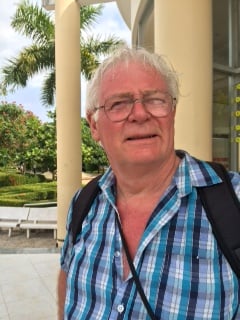
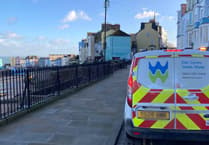
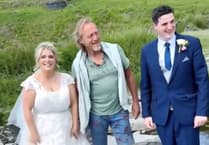
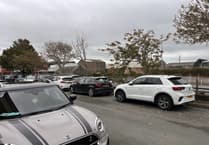
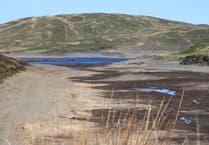
Comments
This article has no comments yet. Be the first to leave a comment.